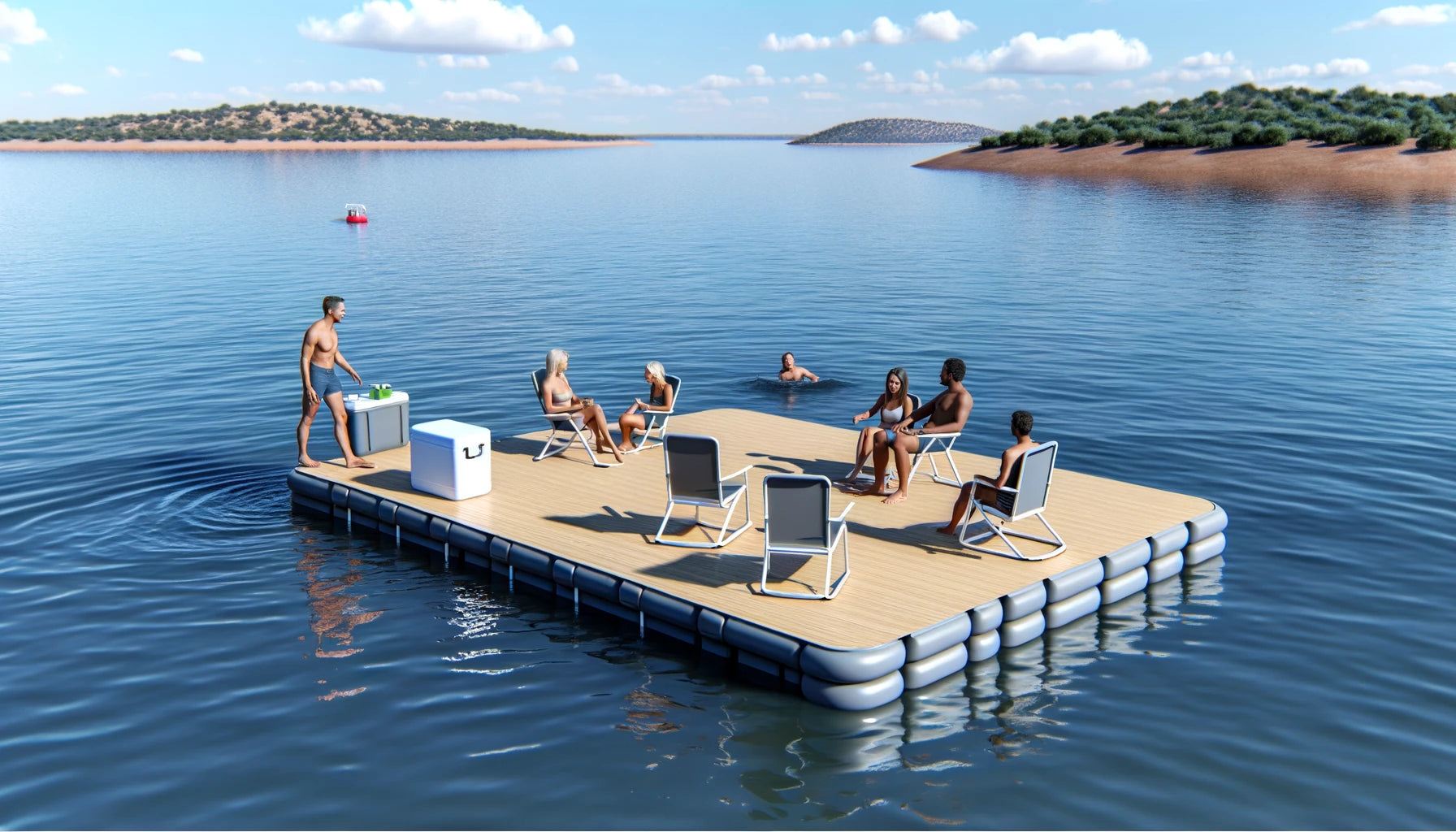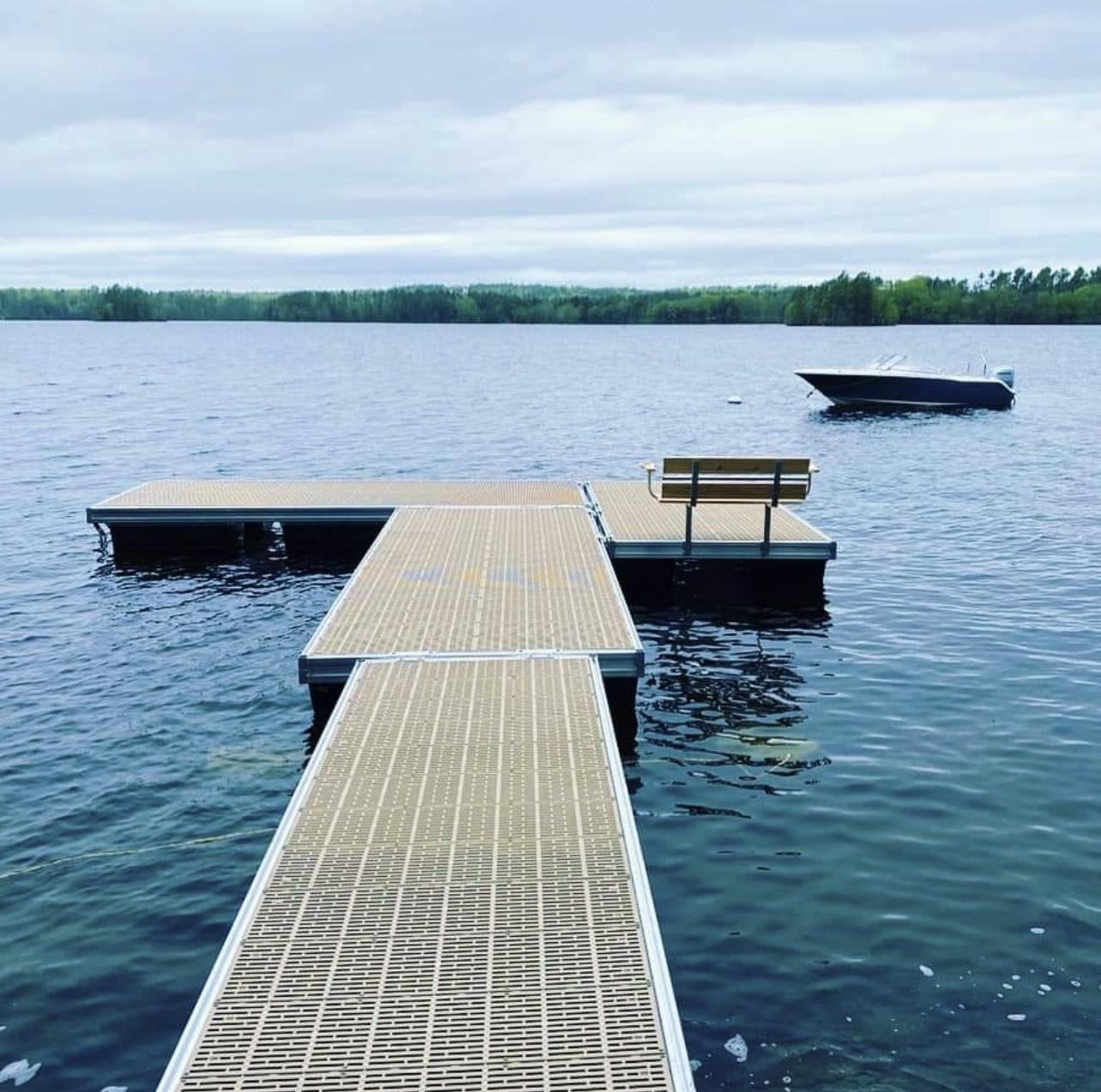Create the Perfect Docking Option With Floating Docks
Floating docks existing a flexible service for a selection of maritime requirements, adjusting perfectly to varying water levels and varied vessel kinds. Their modular nature permits rapid installation and relocation, yet the selection of proper materials and layout functions is crucial for making certain both capability and aesthetic charm. As we check out the vital components that contribute to the performance of floating docks, numerous crucial factors pertaining to security and upkeep will emerge, increasing concerns concerning exactly how to optimize your docking experience. The subsequent discussion will brighten these vital considerations.

Benefits of Floating Docks
Floating docks deal various benefits that make them a suitable option for various maritime applications. Among the key benefits is their versatility to transforming water degrees. Unlike taken care of docks, floating docks fluctuate with the trend, making sure regular access for vessels. This attribute is specifically crucial in areas vulnerable to substantial tidal fluctuations or seasonal water level modifications.
In addition, floating docks are generally simpler and quicker to set up contrasted to conventional set structures. Their modular design permits straightforward assembly and disassembly, promoting upkeep and relocation when needed. This versatility is particularly beneficial for momentary applications or in settings where problems may alter.
Floating docks likewise often tend to be much more eco-friendly, as they lessen interruption to the seabed and surrounding marine ecological communities. Their buoyant nature lowers the risk of damages to marine life, advertising a much healthier environment. These docks can be tailored to fit numerous vessel sizes, guaranteeing that they meet specific functional requirements.
Eventually, the combination of versatility, ease of setup, and ecological factors to consider makes floating docks a very reliable option for a wide variety of maritime needs.
Selecting the Right Products
Picking the proper materials for floating docks is crucial to ensure longevity, sturdiness, and security. The option of products directly impacts the dock's performance in different ecological problems, consisting of direct exposure to water, sunlight, and possible wear from aquatic traffic.
Typical products made use of for floating docks include aluminum, timber, and high-density polyethylene (HDPE) Light weight aluminum is lightweight, corrosion-resistant, and calls for minimal upkeep, making it an excellent selection for longevity. Its initial price can be higher compared to other materials.
Wood, while aesthetically attractive and giving a conventional appearance, can be prone to rot and pest damages if not effectively dealt with. As a result, using pressure-treated timber or naturally long lasting species like cedar or redwood can mitigate these concerns.
HDPE is a popular choice as a result of its resistance to UV rays and chemicals, along with being eco-friendly. dock company. It is offered and light-weight in different colors, permitting for customization
Ultimately, the ideal material option will depend upon particular needs, consisting of budget plan, preferred visual appeals, and ecological considerations. Cautious evaluation of these aspects will result in a successful and resilient floating dock option.
Layout Considerations for Security
When developing floating docks, ensuring security is a basic element that can dramatically affect their capability and security. Stability in floating dock style is influenced by various variables, consisting of buoyancy, weight circulation, and the setup of parts. An optimal buoyancy system ought to utilize materials that supply adequate lift while minimizing weight. This balance guarantees that the dock continues to be above water, also under varying loads.
Weight circulation is critical; uniformly dispersing lots across the dock protects against tilting and boosts security. Larger designs can provide boosted security, particularly in harsh water problems, while longer docks may require added assistances to protect against sagging.
Another essential factor to consider is the environmental impact, consisting of wave activity and wind. Incorporating attributes such as sidewalls or skirting can help mitigate the impacts of ecological pressures, maintaining stability in negative problems. Eventually, a mix of thoughtful style, product selection, and understanding of ecological aspects will generate a floating dock that meets both stability and safety demands.
Installment Tips and Methods

Next, protect the required licenses and abide by neighborhood laws, which might determine setup techniques and ecological considerations. Involve a certified specialist experienced in floating dock installations if required. Usage top notch materials developed for marine atmospheres to enhance durability and durability.
When positioning the dock, align it alongside the coastline to facilitate easy gain access to. Make sure that the anchoring system is robust, anchor using concrete blocks or helical supports to maintain the dock versus wind and wave activity. It's essential to represent seasonal water level changes, consisting of prospective ice movement in colder environments.
Throughout the installment, ascertain the dock's floatation and security prior to completing the anchoring. Frequently evaluate the installment for any indications of wear or damages. By following these strategies and ideas, you can attain a protected, functional, and cosmetically pleasing floating dock installment that meets your demands.
Upkeep and Care Guidelines
Preserving and caring for floating docks is important to lengthening their life-span and making sure secure use. Normal examinations ought to be conducted to recognize any kind of indicators of wear, damage, or marine development. Seek cracks, loose fittings, or blemished locations on the dock's surface, as these problems can compromise structural stability.
Cleansing is important. Use a stress washing machine to get rid of algae, barnacles, and particles, which can build up in time. For persistent growth, take into consideration ecologically pleasant cleansing agents that will not hurt water life.
Furthermore, check the mooring lines and anchors often to guarantee they are secure and free from deterioration. Replace any kind of frayed or harmed lines immediately to keep security.
Throughout extreme weather, such as tornados or freezing conditions, a fantastic read take preventive actions. Protect the dock with extra mooring lines and, if possible, get rid of any detachable elements to avoid damages.
Final Thought
Finally, the application of floating docks offers a reliable and versatile docking solution ideal for numerous maritime applications. Their versatility to rising and fall water levels, combined with a modular layout, enables simple personalization and moving. Picking ideal materials improves both toughness and aesthetic charm, while careful consideration of stability makes certain safety and security and long life. With appropriate installment and routine maintenance, floating docks can offer efficient and dependable docking experiences for a vast array of vessels.
As we discover the crucial components that add to the performance of floating docks, several crucial aspects regarding security and maintenance will certainly arise, raising concerns concerning exactly click for more how to enhance your docking experience. Unlike fixed docks, floating docks rise and autumn with the trend, making certain constant accessibility for vessels.When developing floating docks, making certain security is an essential aspect that can substantially affect their functionality and safety and security. Security in floating dock style is influenced by numerous elements, including buoyancy, weight distribution, and the plan of parts. Ultimately, a combination of thoughtful style, product option, and understanding of environmental variables will certainly yield a drifting dock that fulfills both security and security requirements.